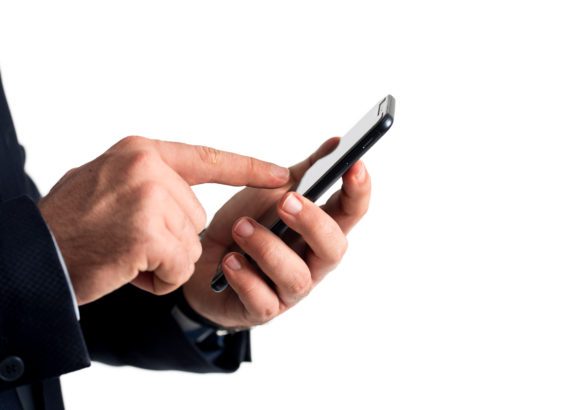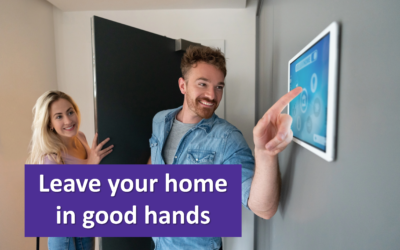Social media gets a bad rap. With headlines like “Social Media: The Good, The Bad, and The Ugly” and “Social Media’s Impact on Mental Health is Far More Serious Than You Think” dominating the narrative, it’s not hard to see why. If you feel like social media can be bad for your mental health, you’re not alone. Popular culture seems to confirm it.
But it isn’t so cut-and-dry.
Social media also brings a world of good—when it’s used mindfully. Not only does it act as a platform for creativity in the form of images, videos, and graphics, it also allows for networking and socializing. Additionally, it provides ample opportunity for organic and small business marketing, and even promotes simple online buying and selling. In essence, social media helps form new relationships globally and provides entertainment along the way. It’s a quintessential example of work, play, and learn all in one place.
And this is just scraping the surface of how social media positively impacts our world.
But it would be naïve to just focus on the good of social medial. There are plenty of negatives that come with our digital world. As suggested above, social media can have mental health implications with users, including increased anxiety. It can also create negative physical effects, such as an increased risk of eye strain due to blue light.
However, using social media doesn’t have to be an all-or-nothing kind of thing. It’s easy to avoid the negatives and take advantage of the positives when you use technology mindfully.
By practicing moderation, cleaning up your feed, and learning how to find your worth beyond the numbers, social media can go back to being what it was made for—fun.
Practice moderation.
To say that social media is addicting would be a big understatement. Popular social sites like TikTok and Instagram use algorithms to keep users on the app. If you’ve ever woken up from a fugue state of doomscrolling for hours, you know the obsession is real.
So, how does social media go from entertainment to addiction? You can thank neurotransmitters in your brain for that. They basically associate specific apps with pleasure, increasing your desire to keep scrolling. Since dopamine increases when you click on your favorite app, the outcome is a temporary positive feeling leaving you with the need for more of that kind of reinforcement. (already talked about this above)
So, how do we fix to the problem? Moderation.
Since social media is designed to stimulate addiction, placing restrictions on how much time you spend on specific apps can be an easy way to keep yourself in check. Phones even have tools in place to aid you in reducing the amount of time spent on social media. For example, on iOS devices, clicking ‘Settings’ and then ‘Screen Time’ allows you to set time limits for specific apps. Once the limit has been reached, a notification will appear as a reminder to exit the app.
You may be saying to yourself, “Just because a notification tells me to get off an app doesn’t mean I’m going to listen.” That’s valid; however, setting this limit creates more friction between you and the act you’re trying to do, which may eventually give you the necessary incentive to take a break.
Another way of practicing moderation can mean regulating the physical effects of screen time, specifically when it comes to blue light. An easy way to absorb blue light in moderation is by buying a pair of blue light glasses. Since digital devices emit a blue light that can cause eye irritation, increased risk of vision problems, and headaches, purchasing glasses with lens crafted to filter out the blue light emission from screens is a simple fix. And the best part is, most blue light glasses fall in the $10 price range.
A good first step to combat anxiety is determining who or what triggers your negative emotions. Often, social media acts like a highlight reel. The content you see may often cross that fine line between being motivational and discouraging.

Clean up your feed.
Once you’ve figured out the root of your anxiety, clean up your feed to reflect it. For example, if you’re around someone in real life who makes you feel insecure, brings negativity to your day, or makes you question yourself, you probably want to spend less time with that person, right? Why should social media be any different?
Yes, unfollowing people—especially family members and close friends—can often be taboo. These days, being social media friends comes with the territory of real-life relationships. Unfollowing a controversial pal or cousin will most certainly come with consequences—an uncomfortable text at the very least.
The good news? Most social media platforms now give users the option to mute friends or followers. This means that you are still following the user or account, but their content doesn’t show up on your feed. It’s an easy way to avoid seeing negative, nonbeneficial posts on your social platforms without letting those you’ve muted know that you’ve done so.
Once you’ve kicked all the negativity out of your feed, it’s time to bring in some positivity! Who said you only have to follow friends, family members, or celebrities? Positive social media accounts come in an array of styles—ranging from inspirational quotes, to cute dog videos, to aesthetic photography. Following accounts that post positive, smile-worthy content can create a nice break in your feed of selfies and travel pictures.
In need of some positive accounts to follow on Instagram? Check these out!
- @wetheurban
- @wearefeelgoodclub
- @thegoodquote
- @the_happy_broadcast
- @stacieswift
- @petermckinnon
- @Woofwooftv
- @thehappynewspaper

Don’t base your worth in numbers.
From a young age, we’ve been conditioned to put our worth in hard figures. Whether we were striving to get an A+ on an elementary school math test or retook the SAT to bump up from an 1100 to 1300, our brains have been programed to believe that only the numbers matter. We’re even taught that we won’t be successful if we don’t have 500+ connections on LinkedIn.
It’s no surprise that the same goes for social media. Between likes and follower counts, users gain their sense of worth by how ‘popular’ they are on the app. Having 1000 followers is ‘better’ than having 200, and when a post only gets ten likes, it’s ‘worthless’. Numerical values are just another way that social media keeps you addicted. It’s a classic case of Keeping Up with the Joneses (or should I say, Kardashians…)—users are constantly trying to have as many likes, followers, and interactions as their peers so they can come out on top.
It’s easier said than done to just not care, so a simple way to combat the numbers game happening online is by turning off likes and social media notifications. Doing this is a great way to embrace the ‘out of sight, out of mind’ mentality. You’ll be less likely to check if your post is “doing well” if you’re not seeing the notifications come through your phone’s lock screen. As for turning off likes, while it is not possible on certain sites, taking advantage of this feature on platforms such as Instagram is a great way to steer clear of putting your worth in a number. Taking it one step further, if you’re self-conscious about how many people comment on your posts, it’s always an option to turn off the comments altogether!
The power of social media is in our hands, not the other way around.
Social media isn’t going anywhere. In fact, it only continues to grow. From virtual job searches through LinkedIn, to starting a new relationship on Bumble, people enhance their daily lives on social media platforms in ways we couldn’t have dreamed of a decade ago. It’s entirely up to us if social media continues this way. We have the power to use it to benefit our lives and the lives of those around us every time we launch an app. Through mindfulness, we can eliminate negatives and emphasize the things that have true, lasting, positive impacts on our lives. And when it comes to social media, that’s something we can all really ‘like.’








